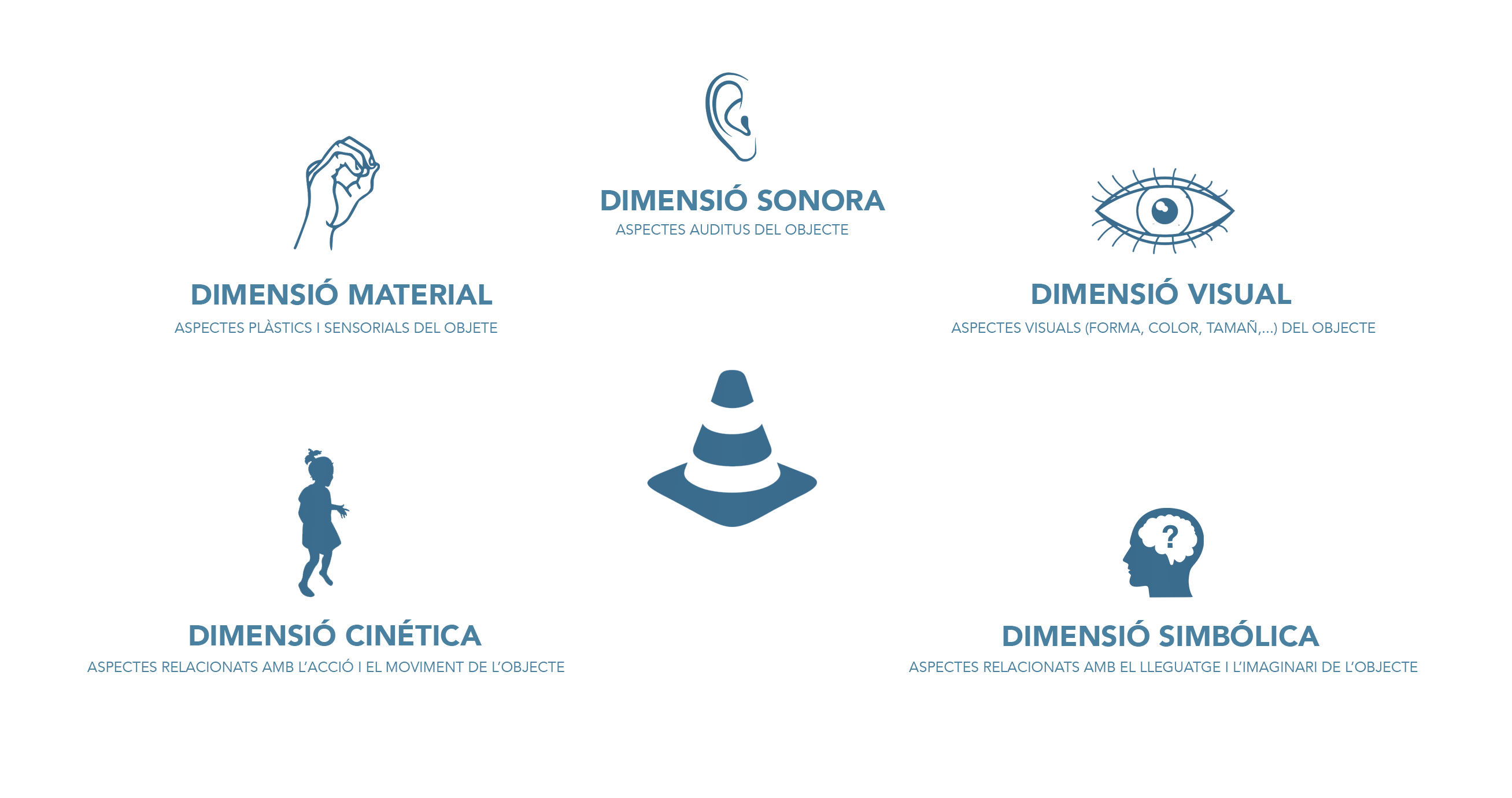Artistic research and knowledge production
Our approach in the field of research involves several types of methodologies, such as art practice as research, research in art and collaborative research to promote art as an agent of knowledge.
With this hybridisation we advocate an in disciplinary area that explores the capacity of art to enable fictions, social dispositive and processes of subjectivisation to articulate a cognitive ecology based on under commons, situates and non-specialised knowledge.
Our approach in the field of research involves several types of methodologies, such as art practice as research, research in art and collaborative research to promote art as an agent of knowledge.
With this hybridisation we advocate an in disciplinary area that explores the capacity of art to enable fictions, social dispositive and processes of subjectivisation to articulate a cognitive ecology based on under commons, situates and non-specialised knowledge.
︎ An experiential and situated knowledges
To situate the knowledges in the experience fields allows us question power relations and to create optimal conditions for dialogue, difference and the exchange of ideas and positions.
︎ An undisciplined Knowledge
We understand indiscipline as a way of organising knowledge that transcends disciplines in a radical way; it is what is between disciplines, what crosses them and what is beyond them, where knowledge mutates and takes on an unexpected dimension.
To situate the knowledges in the experience fields allows us question power relations and to create optimal conditions for dialogue, difference and the exchange of ideas and positions.
︎ An undisciplined Knowledge
We understand indiscipline as a way of organising knowledge that transcends disciplines in a radical way; it is what is between disciplines, what crosses them and what is beyond them, where knowledge mutates and takes on an unexpected dimension.
︎ A knowledge of the invisible
We believe in the competence of the arts to work on the revelation of undercommons: invisible, lateral and subordinate knowledge. Therefore, our research is not limited to the creation of artistic objects, but aims to develop and extend the cooperation between the agents and objects involved in the research.
We want to promote open spaces where our research can be nourished by diverse perspectives, especially those that are anti-hegemonic and silenced.
We believe in the competence of the arts to work on the revelation of undercommons: invisible, lateral and subordinate knowledge. Therefore, our research is not limited to the creation of artistic objects, but aims to develop and extend the cooperation between the agents and objects involved in the research.
︎An intersectional knowledge
Odradek is research about the capacity of objects to induce sensorial and symbolic experiences in the learning processes of the arts with the support of the research grants of the Department of Culture of the Generalitat de Catalunya and the collaboration of the CCCB, the Xirinacs School and La Poderosa.
Related content:
︎ Research website
︎︎︎ La lluna en un cove
︎︎︎ Training courses
︎︎︎ The ongoing scene
Related content:
︎ Research website
︎︎︎ La lluna en un cove
︎︎︎ Training courses
︎︎︎ The ongoing scene
Odradek
Reaserch I
2020-2022
![]()
Odradek is a research about the capacity of objects to induce sensorial and symbolic experiences in the learning processes of the arts. Through a methodology based on bodily relations with object, we propose a transversal perspective on contemporary art that links experimentation around the (per)formativity of the object in the artistic field with the trends of experimental pedagogies that are committed to globalised artistic learning spaces based on playful and cooperative play, exploration, intuition, and children’s creativity.
![]()
![]()
![]()
![]()
![]()
![]()
![]()
![]()
![]()
![]()
The investigation points to the phenomenological potential of the object as a mediator in learning processes. The title takes the Kafkaesque figure of the animated object to allude to the active and paradoxal condition of objectuality in arts, linking a set of plastic, choreographic, visual, and literary strategies that claim bodily experimentation with the object through play to developed sensitivity, creativity, imagination and divergent thinking.
Therefore, the research aims to transfer a set of references, tools and views of different artistic disciplines such as dance, sculpture, visual poetry, architecture o design, and settle the practices and methodological principles to articulate a globalised work frames of the arts in formal and informal education environments.
![]()
Reaserch I
2020-2022
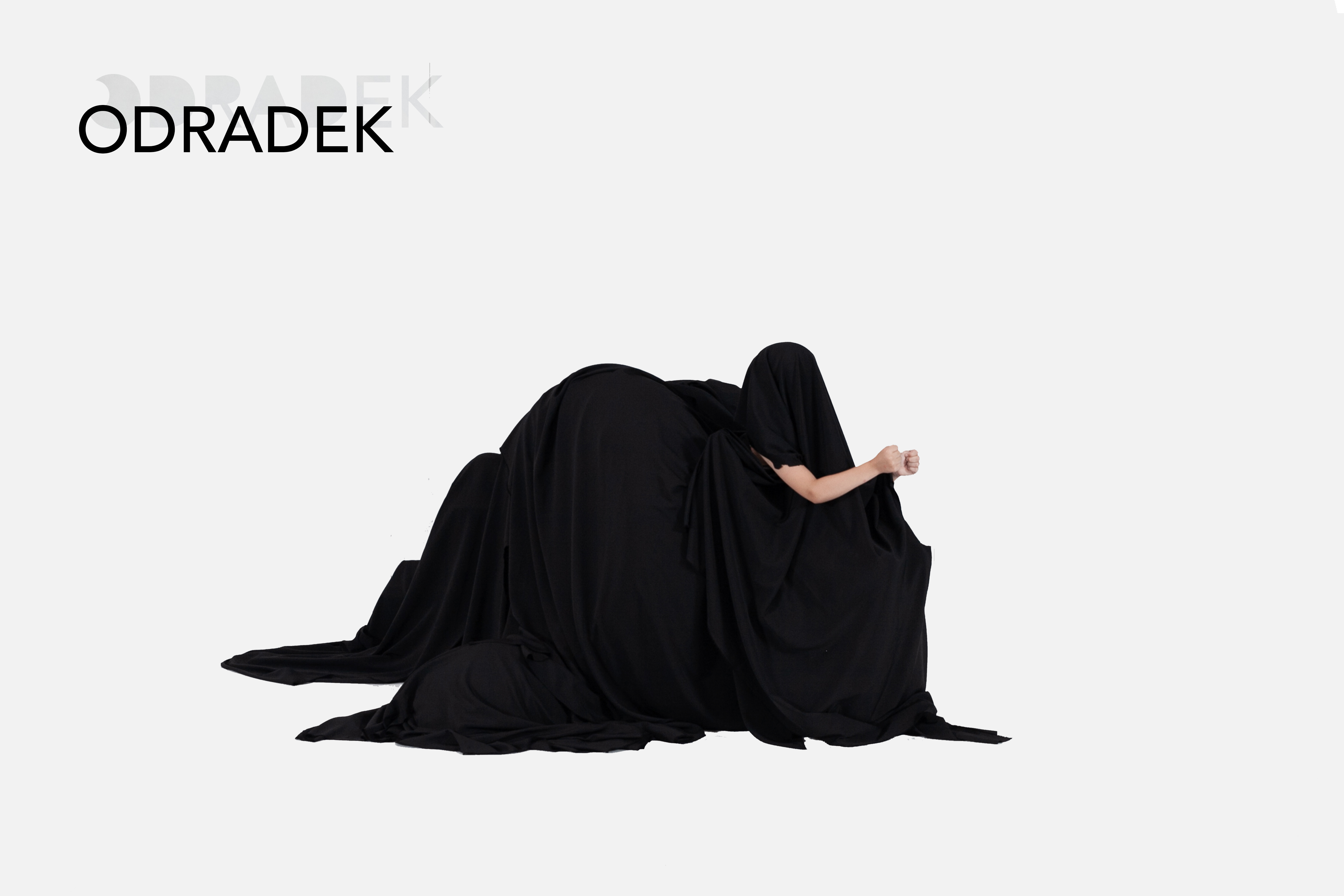
Odradek is a research about the capacity of objects to induce sensorial and symbolic experiences in the learning processes of the arts. Through a methodology based on bodily relations with object, we propose a transversal perspective on contemporary art that links experimentation around the (per)formativity of the object in the artistic field with the trends of experimental pedagogies that are committed to globalised artistic learning spaces based on playful and cooperative play, exploration, intuition, and children’s creativity.

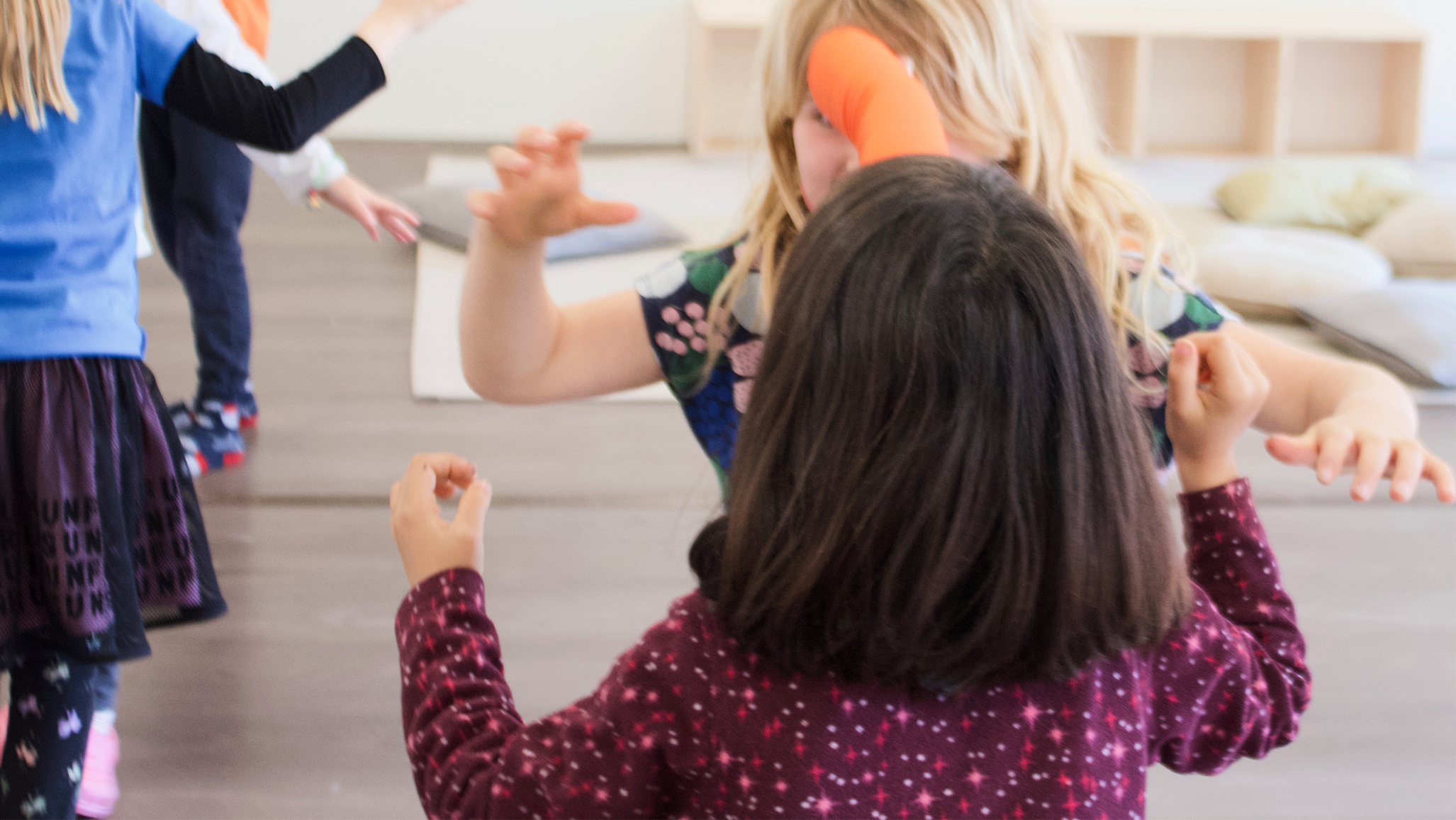


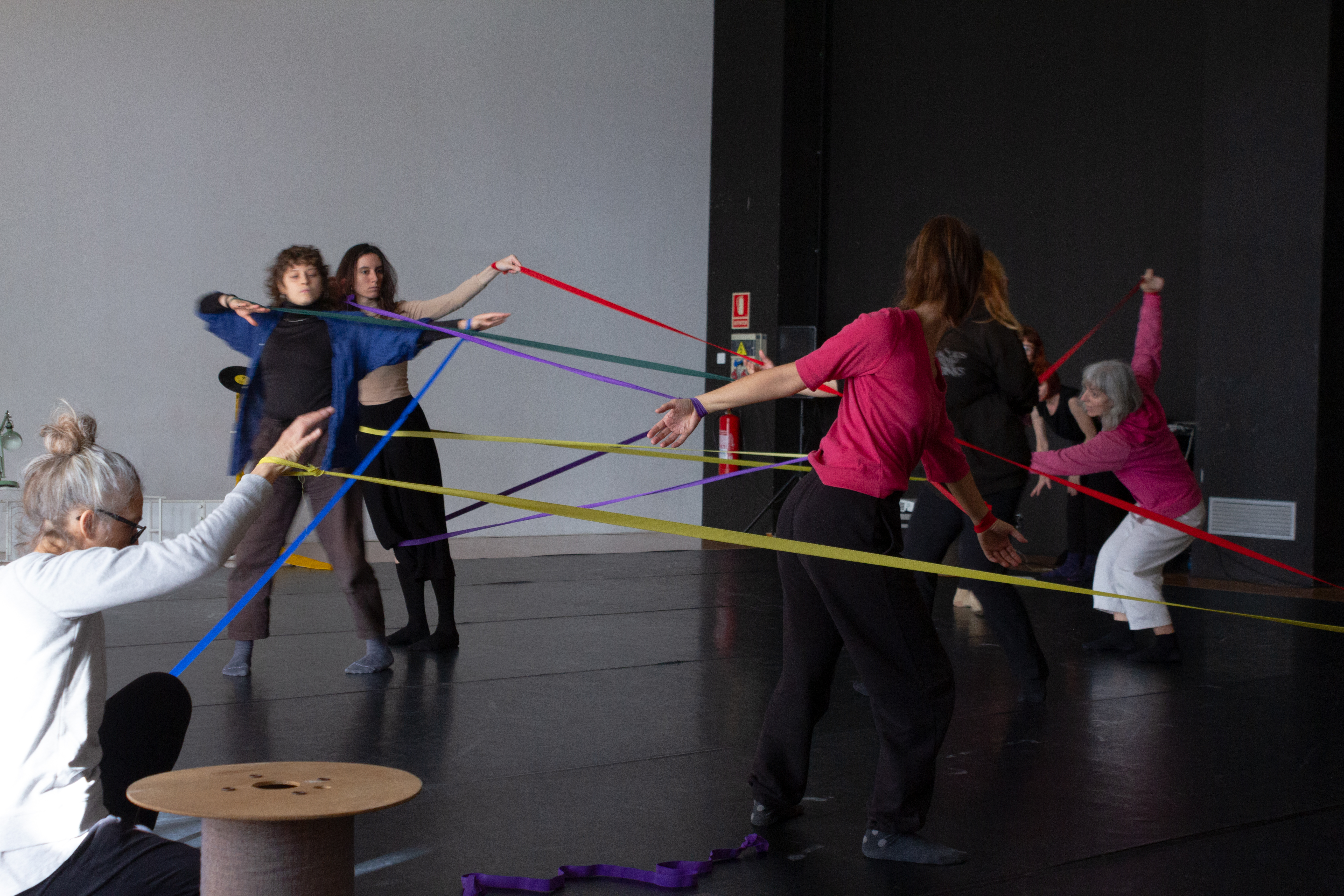

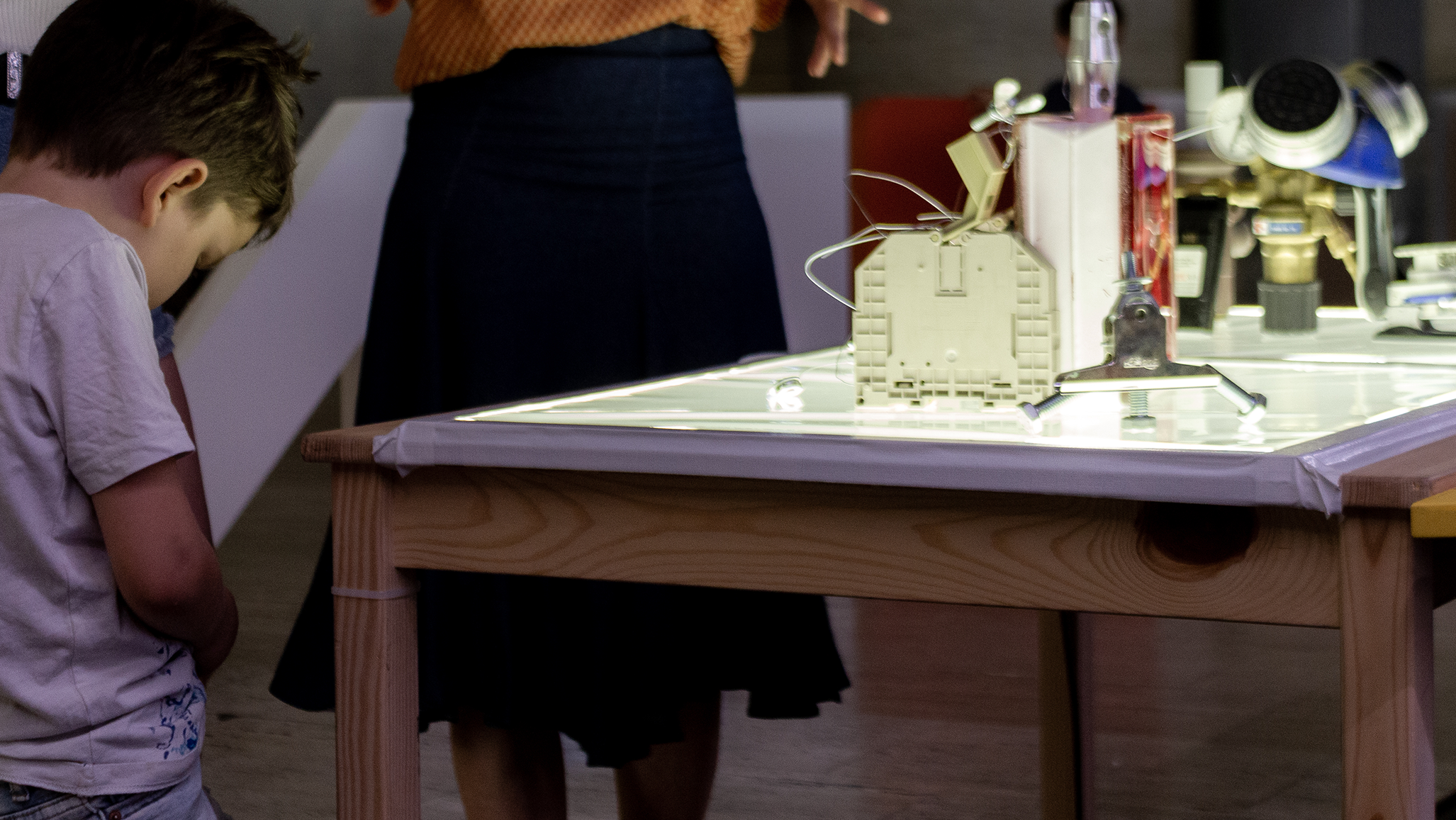
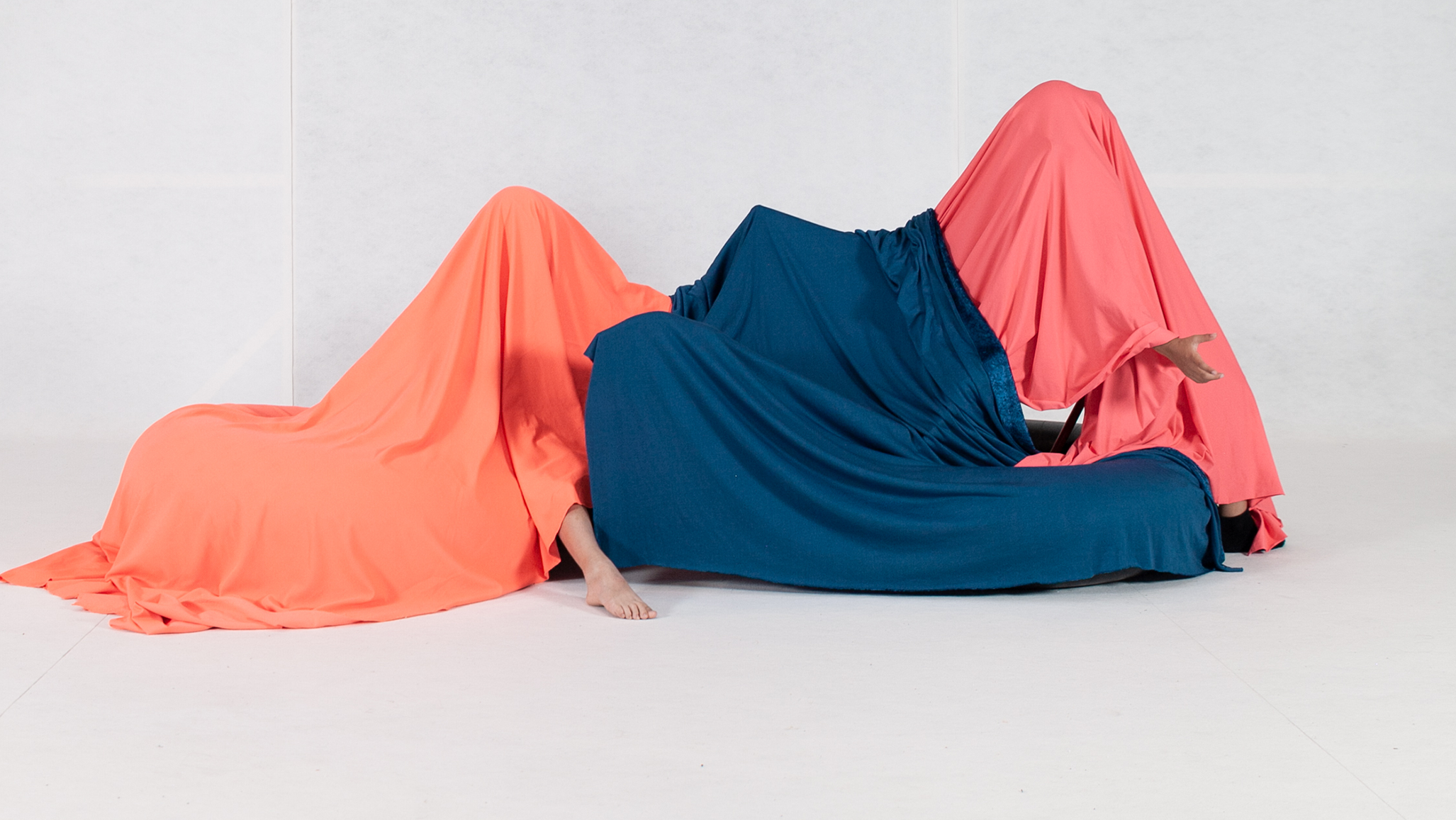
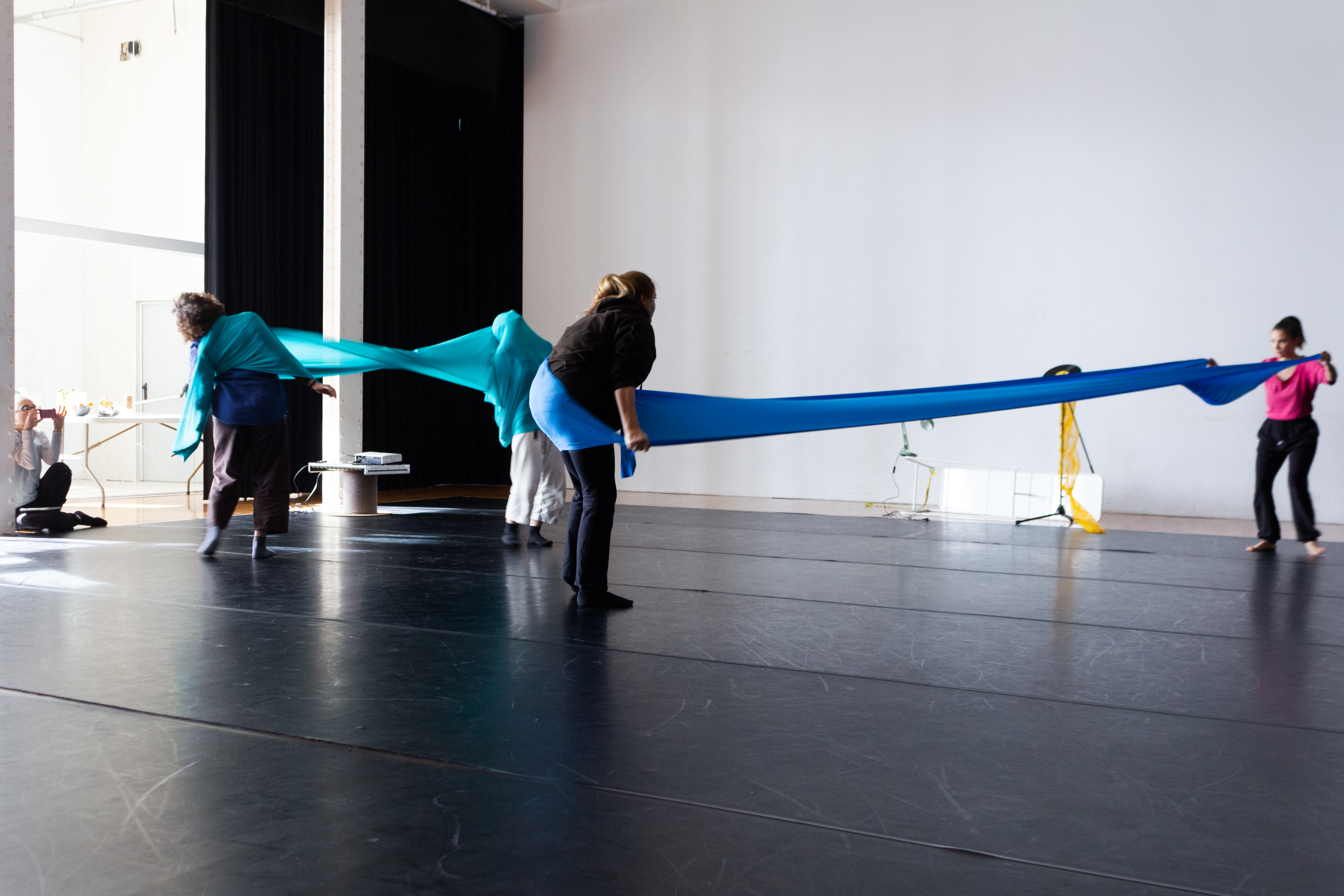

The investigation points to the phenomenological potential of the object as a mediator in learning processes. The title takes the Kafkaesque figure of the animated object to allude to the active and paradoxal condition of objectuality in arts, linking a set of plastic, choreographic, visual, and literary strategies that claim bodily experimentation with the object through play to developed sensitivity, creativity, imagination and divergent thinking.
Research Website
Therefore, the research aims to transfer a set of references, tools and views of different artistic disciplines such as dance, sculpture, visual poetry, architecture o design, and settle the practices and methodological principles to articulate a globalised work frames of the arts in formal and informal education environments.

Contac Zones: between-places of live arts and education is site-specific research carried out on the basis of the Caixa d'Eines Programme at Graner Center of dance and live arts that explores the relationship between art and pedagogy from a hybrid perspective that is situated between the art scene and the educational scene.
Related content:
︎ Research webside
︎︎︎ Caixa d’Eines Programme
︎︎︎ Research articles
︎︎︎ Publications
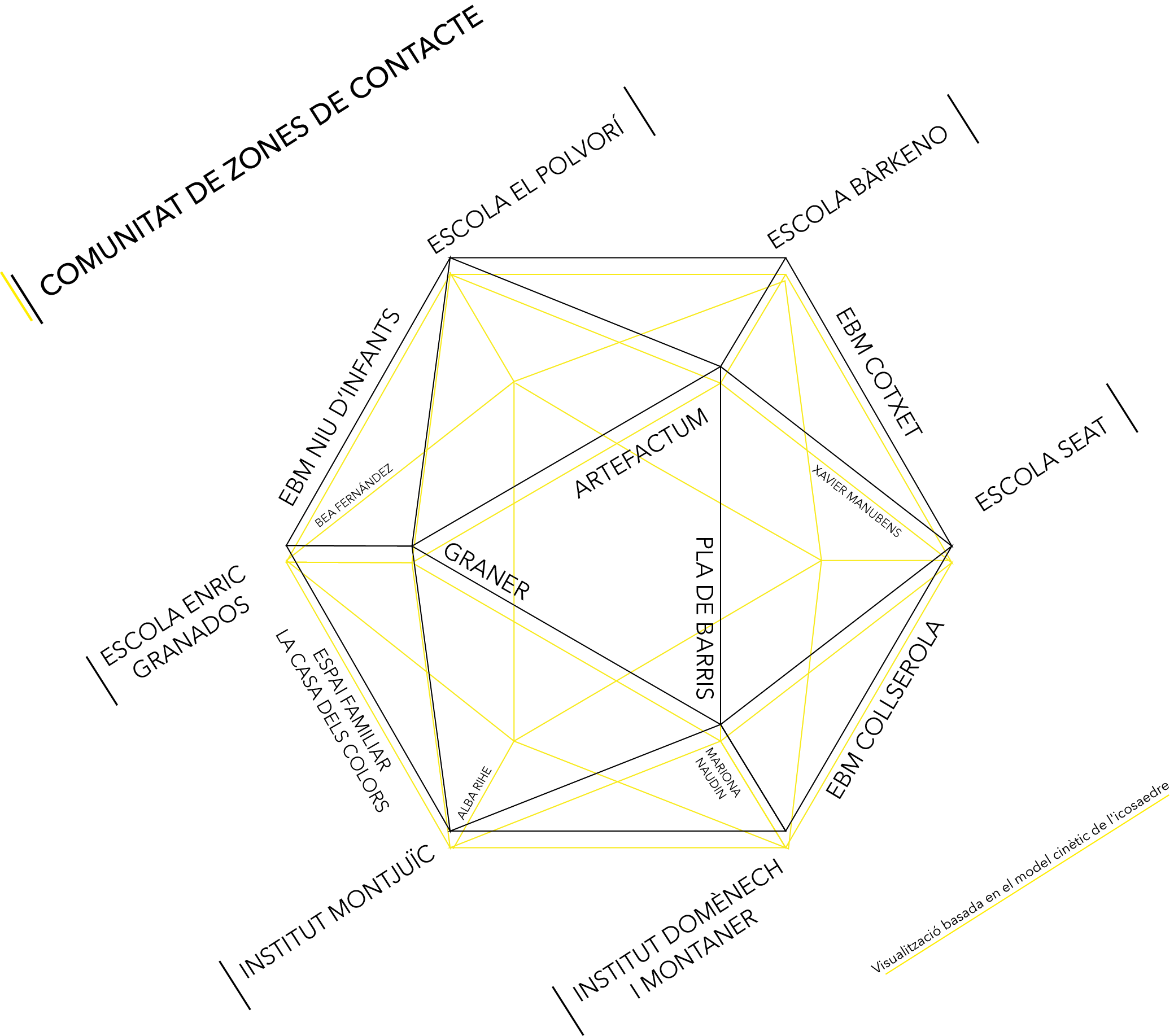
Red de agentes e instituciones involucradas en la investigación
Contac Zones: between-places of live arts and education
Research I New institutionality and art mediation
2019-2021
![]()
Contact Zones explores the relationship between live art and pedagogy with the aim of developing mediation models, formats and methodologies that involve art and education actors and institutions in collaborative strategies based on dialogic, polyphonic and transformative collective knowledge processes.
The programme takes the notion of the "contact zone" as a border space to explore the transformative power of mediation as a strategic space capable of renewing and democratising the meanings of culture between the domains of art and education.
![]()
![]()
![]()
![]()
![]()
![]()
Understood as zones of encounter and contrast, contact zones shift knowledge and artistic-educational practice to a liminal space where they reconfigure their own tools and imaginaries to promote processes of hybridisation of knowledge. This situates mediation as an experimental and (tans)formative space in which to explore new fields of action and knowledge.
Through the creation of learning communities, this research proposes to open spaces in which to share the meanings that emerge in the friction between the arts and pedagogies, to elaborate questions about situated and lived practices, and to exchange tools, procedures and ways of doing.
With this game of transfers and displacements between practices, scenarios, roles and knowledge, we want to promote dynamics in which art is thought from pedagogy, and pedagogy from art, opening spaces of confluence to develop a radically inclusive institutionalism where all the voices of the actors involved are heard.
Research I New institutionality and art mediation
2019-2021

Contact Zones explores the relationship between live art and pedagogy with the aim of developing mediation models, formats and methodologies that involve art and education actors and institutions in collaborative strategies based on dialogic, polyphonic and transformative collective knowledge processes.
The programme takes the notion of the "contact zone" as a border space to explore the transformative power of mediation as a strategic space capable of renewing and democratising the meanings of culture between the domains of art and education.


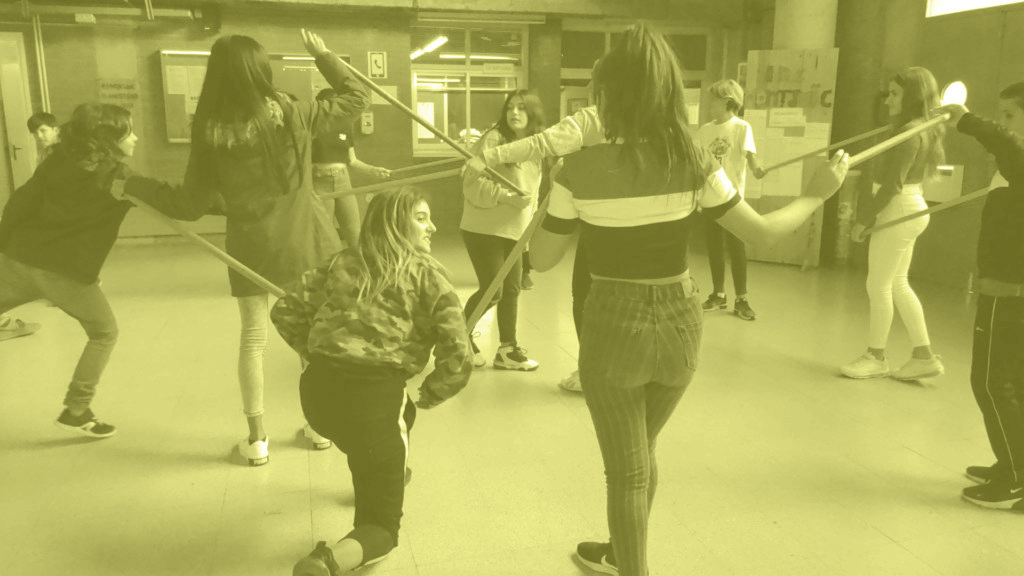



Understood as zones of encounter and contrast, contact zones shift knowledge and artistic-educational practice to a liminal space where they reconfigure their own tools and imaginaries to promote processes of hybridisation of knowledge. This situates mediation as an experimental and (tans)formative space in which to explore new fields of action and knowledge.
Research website
Through the creation of learning communities, this research proposes to open spaces in which to share the meanings that emerge in the friction between the arts and pedagogies, to elaborate questions about situated and lived practices, and to exchange tools, procedures and ways of doing.
With this game of transfers and displacements between practices, scenarios, roles and knowledge, we want to promote dynamics in which art is thought from pedagogy, and pedagogy from art, opening spaces of confluence to develop a radically inclusive institutionalism where all the voices of the actors involved are heard.
The paradox of the spectator is an research into the gaze and the condition of the contemporary spectator, produced with the support of the Departament de Cultura de la Generalitat de Catalunya and Graner Center of dance and live arts.
Related content:
︎ Research graphic memori
︎ Spectators in residence
︎︎︎Scenes from Confinement
![]()
![]()
![]()
![]()
![]()
![]()
Related content:
︎ Research graphic memori
︎ Spectators in residence
︎︎︎Scenes from Confinement


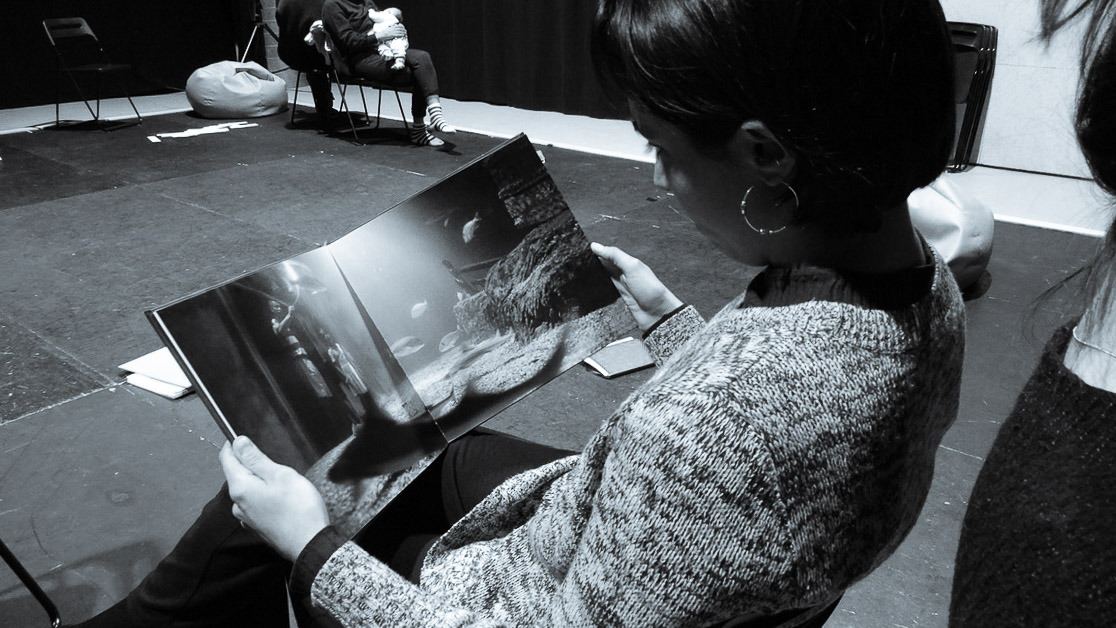

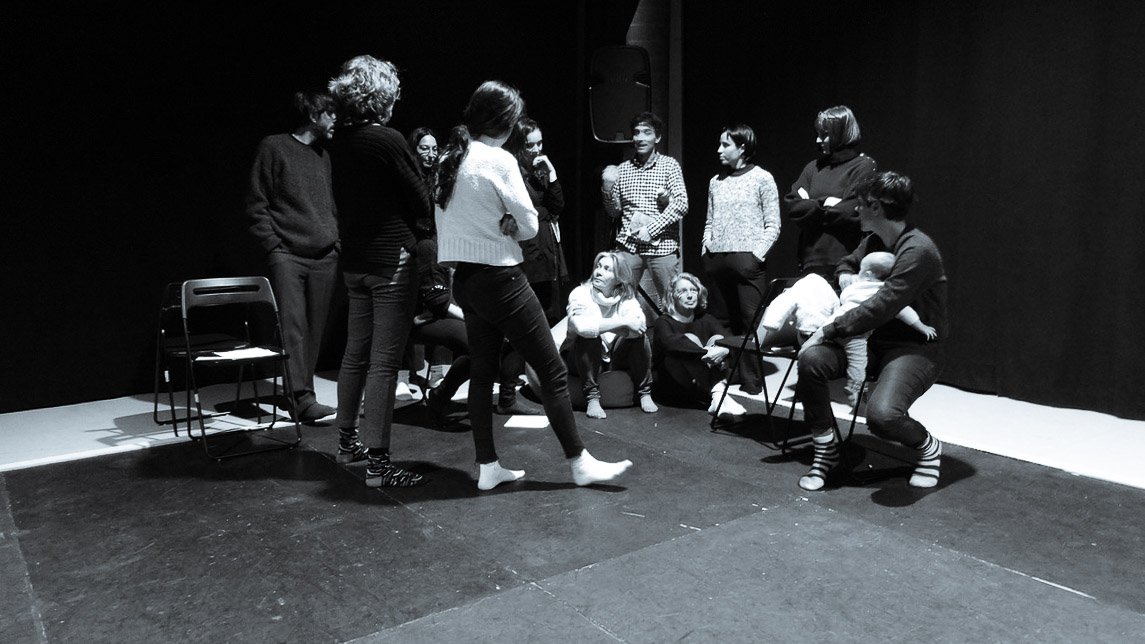
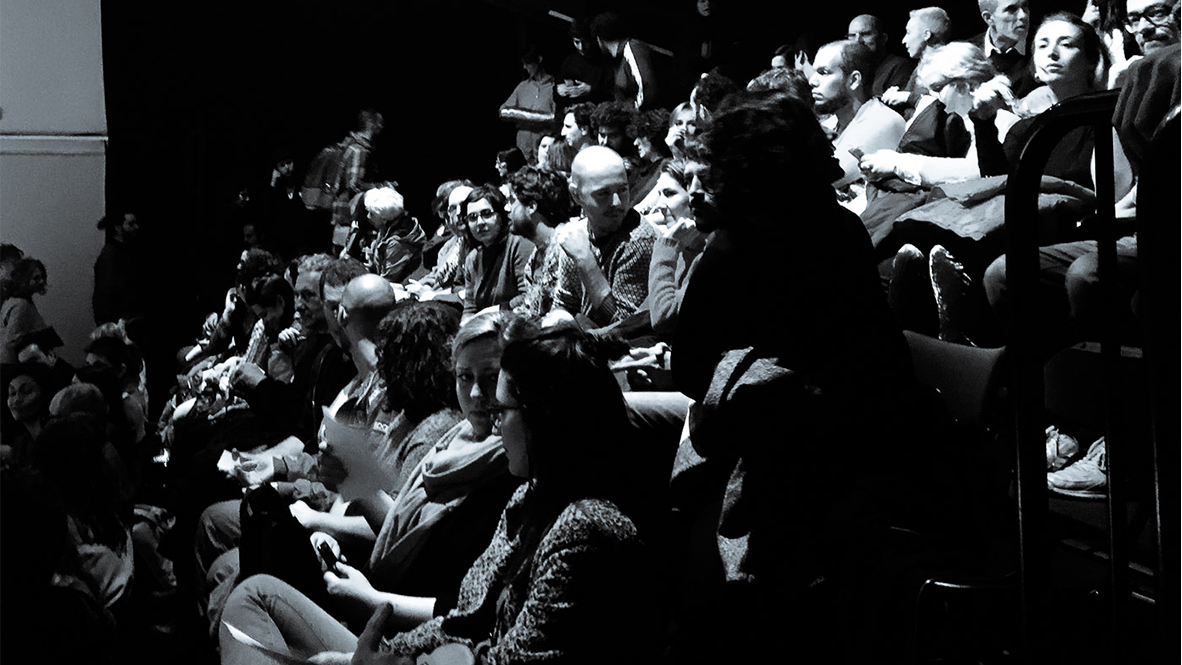
The paradox of the spectator
Research I Visuality criticisms
2019-2021
![]()
The paradox of the spectator arises from the observation of an oversight in the field of the arts. In the face of the insistent attention that artists and works have received during modernity, this research proposes a decisive turn that leads us to lose ourselves in the domains of the spectator. An elusive figure that has managed to remain a secret, veiled by the gloom of the theatres, hidden in cinemas, dispersed in galleries or hidden behind the screens of hyperreality.
The spectator's tendency towards imagery, his supposed passivity in the face of the world, his "enchantment" with fiction, his voyeurism or the idleness of his habits have made him the declared enemy of iconoclastic doctrines, the critique of the spectacle, revolution (Rousseau) and knowledge (Plato). His condition as a double being, willing and exposed to the powers of the fake - fiction and representations - has cost him expulsion from the doctrinaire space of truth. Perhaps this explains the nocturnal and stultifying condition with which it is presented in the corpus of Western tradition.
![]()
From Plato's dialogues, Rousseau's revolutionary maxims, Brecht's pedagogical theatre, Debord's analyses of the inflation of the spectacle, or the more contemporary attempts to create "a theatre without spectators", the West seems determined to remove the spectator from the space of the rapture of fiction and return him to the domains of "the real". His silence, his recollection, his apparent inaction clash with a large part of the aesthetic and political projects of modernity. However, a large part of these projects focus their criticisms on that which is the object of the gaze, ignoring the set of processes that take place in this inevitable and constitutive gesture of vision. What happens in this space and the condition of who holds the powers of vision are the two pillars of this research:
If the gaze is an organ that oscillates between passion and action, a kind of seismograph that traces relations between seeing, saying, feeling and thinking: what scene does the spectator's gaze return to us? How does their gaze act on the scene? Where does it lead and what senses and affects are elaborated in this twilight zone that spectators inhabit? What are the poetics of translation and the games of equivalences that intervene in the production of meaning and experience? How to problematise the field of constitution of the gaze in order to liberate the imagination from the circuits of authority, consumption and spectacle that saturate the space of art and culture? How to rethink the powers of the stage from the perspective of the spectator? How to transform the materials of the stage into a collective territory in which to affirm the imaginaries of the stage to come?
![]()
Research I Visuality criticisms
2019-2021
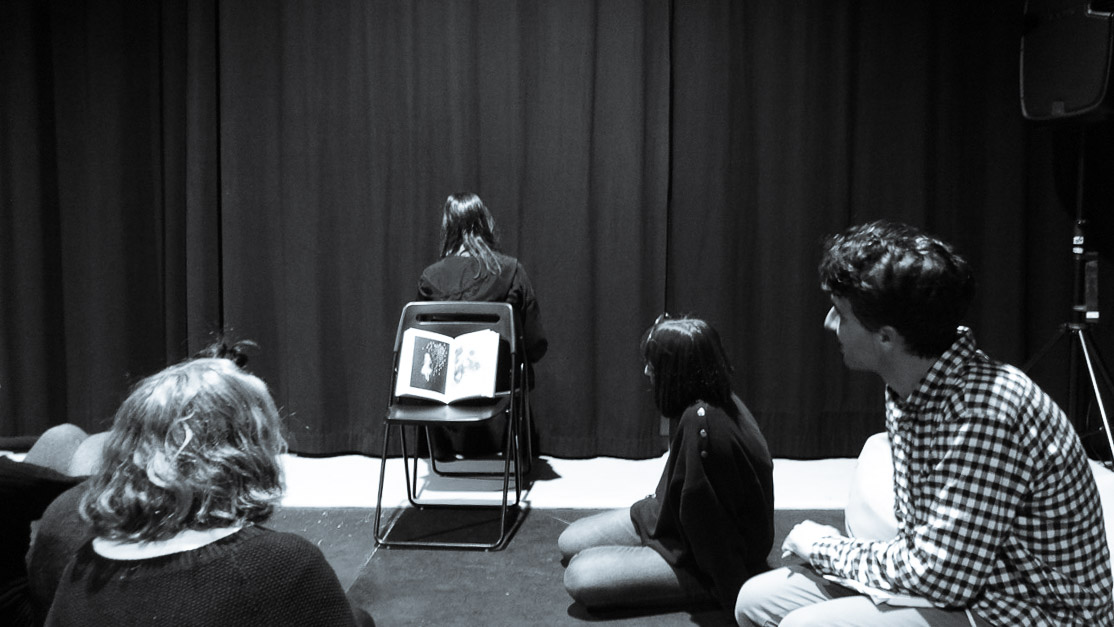
The paradox of the spectator arises from the observation of an oversight in the field of the arts. In the face of the insistent attention that artists and works have received during modernity, this research proposes a decisive turn that leads us to lose ourselves in the domains of the spectator. An elusive figure that has managed to remain a secret, veiled by the gloom of the theatres, hidden in cinemas, dispersed in galleries or hidden behind the screens of hyperreality.
The spectator's tendency towards imagery, his supposed passivity in the face of the world, his "enchantment" with fiction, his voyeurism or the idleness of his habits have made him the declared enemy of iconoclastic doctrines, the critique of the spectacle, revolution (Rousseau) and knowledge (Plato). His condition as a double being, willing and exposed to the powers of the fake - fiction and representations - has cost him expulsion from the doctrinaire space of truth. Perhaps this explains the nocturnal and stultifying condition with which it is presented in the corpus of Western tradition.
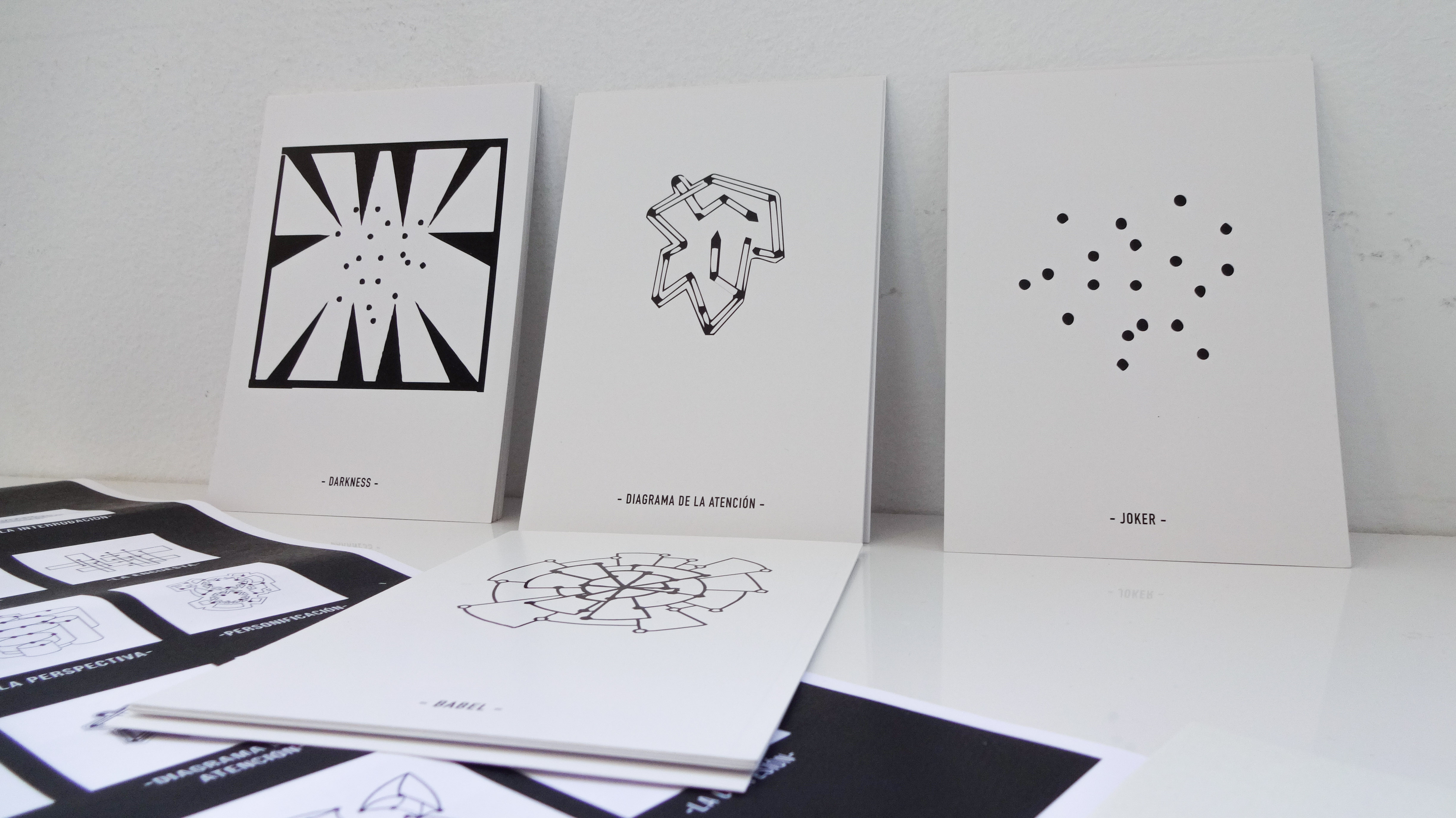
From Plato's dialogues, Rousseau's revolutionary maxims, Brecht's pedagogical theatre, Debord's analyses of the inflation of the spectacle, or the more contemporary attempts to create "a theatre without spectators", the West seems determined to remove the spectator from the space of the rapture of fiction and return him to the domains of "the real". His silence, his recollection, his apparent inaction clash with a large part of the aesthetic and political projects of modernity. However, a large part of these projects focus their criticisms on that which is the object of the gaze, ignoring the set of processes that take place in this inevitable and constitutive gesture of vision. What happens in this space and the condition of who holds the powers of vision are the two pillars of this research:
If the gaze is an organ that oscillates between passion and action, a kind of seismograph that traces relations between seeing, saying, feeling and thinking: what scene does the spectator's gaze return to us? How does their gaze act on the scene? Where does it lead and what senses and affects are elaborated in this twilight zone that spectators inhabit? What are the poetics of translation and the games of equivalences that intervene in the production of meaning and experience? How to problematise the field of constitution of the gaze in order to liberate the imagination from the circuits of authority, consumption and spectacle that saturate the space of art and culture? How to rethink the powers of the stage from the perspective of the spectator? How to transform the materials of the stage into a collective territory in which to affirm the imaginaries of the stage to come?

Playgrounds is a research project that explores artistic strategies, practices and methodologies aimed at playfully exploring the aesthetic, political, ethical and affective dimensions of city spaces.
Related content:
︎ A manual of actions to shake up the city
︎ Showcases: an exhibition of spaces
︎ [Un]released workshops
Related content:
︎ A manual of actions to shake up the city
︎ Showcases: an exhibition of spaces
︎ [Un]released workshops
Playgrounds
Research I Public art
2020- 2021
![]()
Research I Public art
2020- 2021

« What happens every day and comes back every day, the trivial, the everyday, the obvious, the commonplace, the ordinary, the infra-ordinary, the background noise, the habitual, how to account for it, how to question it, how to describe it? »
L'Infra-ordinaire, Georges Perec
«It matters little not to know how to find one's way around a city. On the other hand, getting lost in a city, like getting lost in a forest, requires an apprenticeship. The street signs must then speak to the wanderer like the rustling of dry branches, and the narrow streets of the city centre must reflect the hours of the day as clearly as the hollows of the hills.»
Childhood in Berlin around 1900,Walter Benjamin
Playgrounds is a research project that explores the capacity of the arts to question and intervene the city. The research interrogates the archive of Western art to systematise procedures, practices and ways of playfully approaching the city that activate the aesthetic, political and ethical dimensions of city spaces.
The project takes the form of a publication containing scores, scores, content and working methodologies to activate situated processes of exploration of the city through strategies based on action art, performance, literature, happening and public art.
The project takes the form of a publication containing scores, scores, content and working methodologies to activate situated processes of exploration of the city through strategies based on action art, performance, literature, happening and public art.
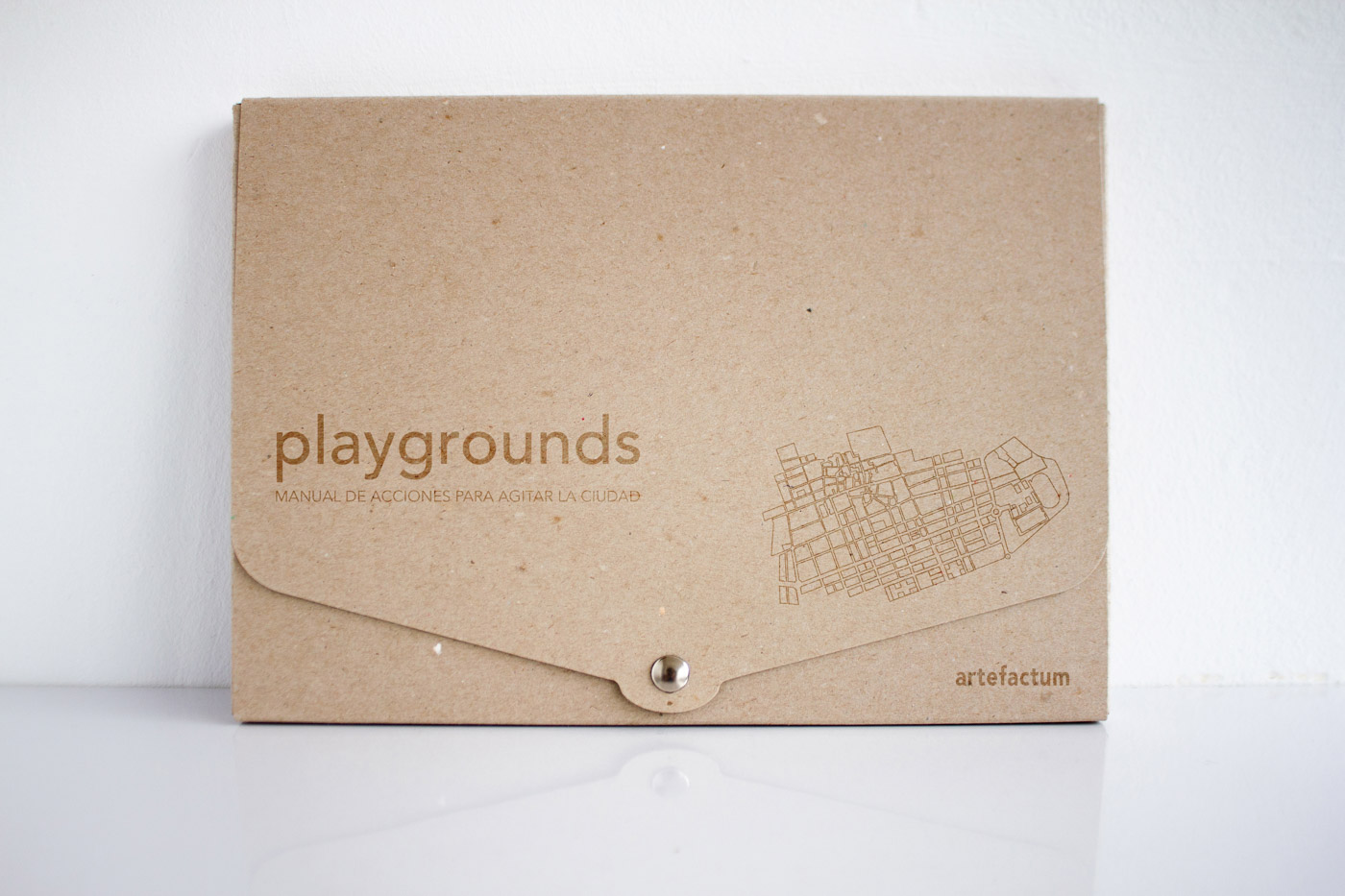


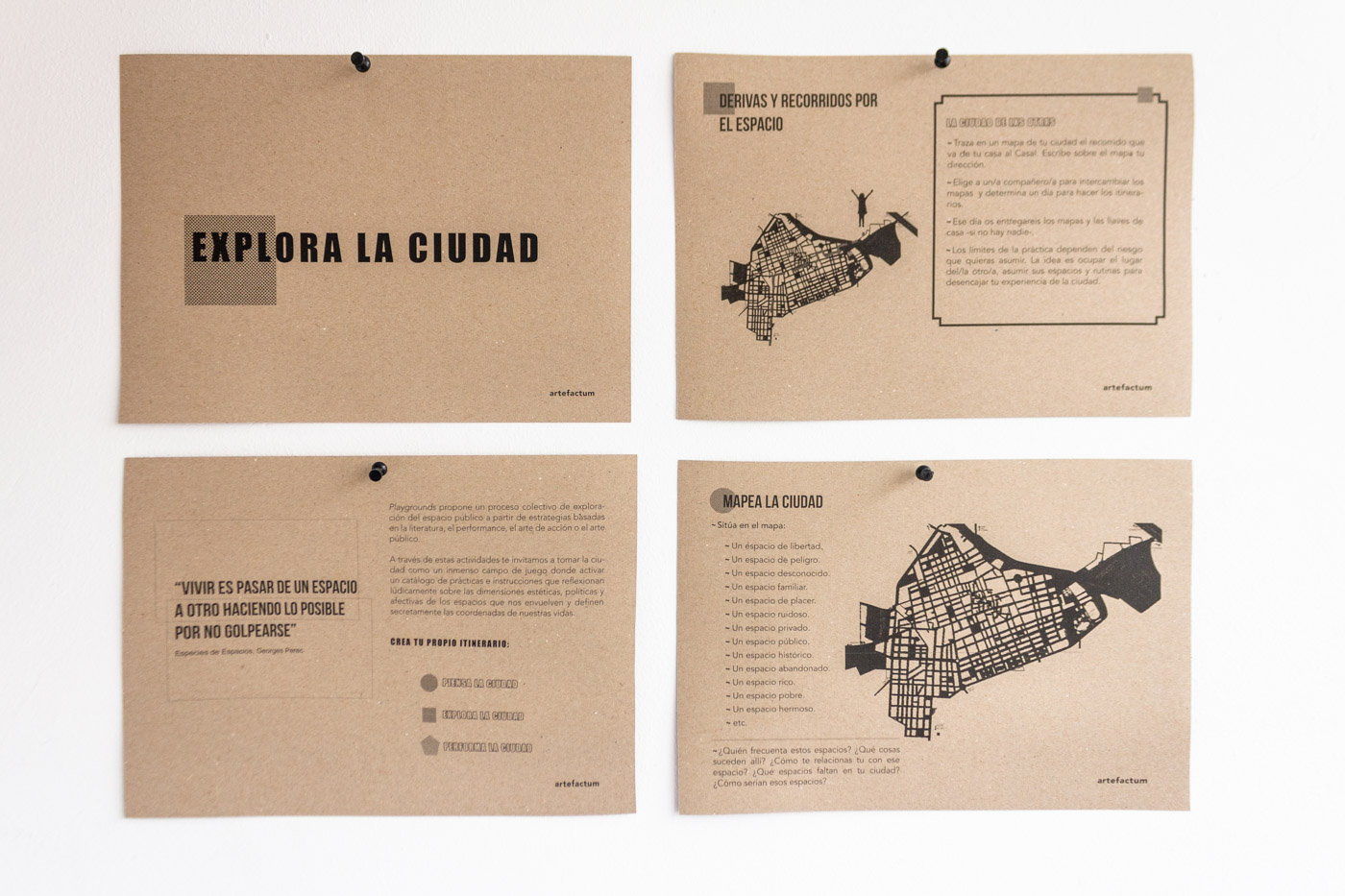


Playgrounds prototype with the first research materials.


